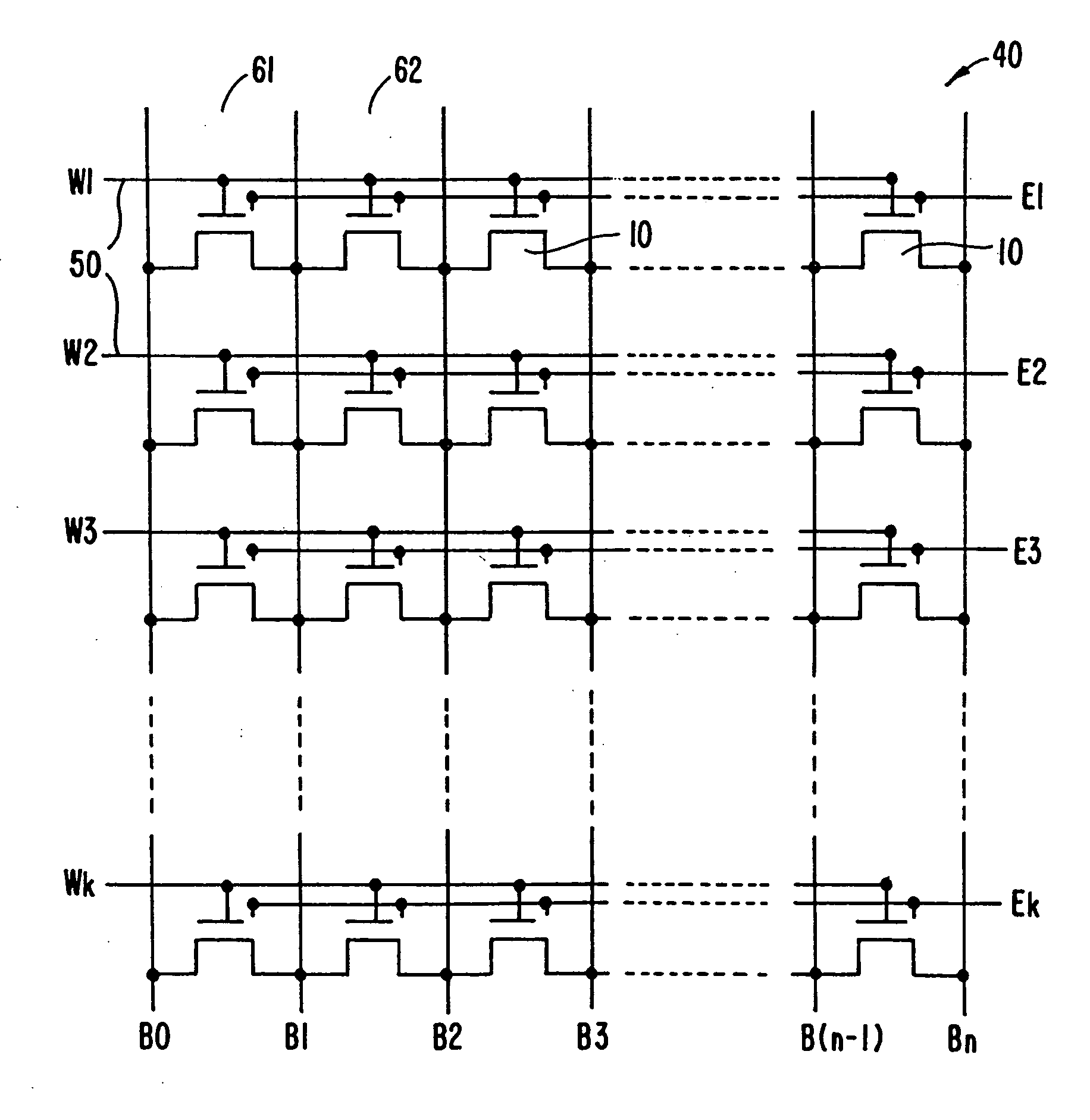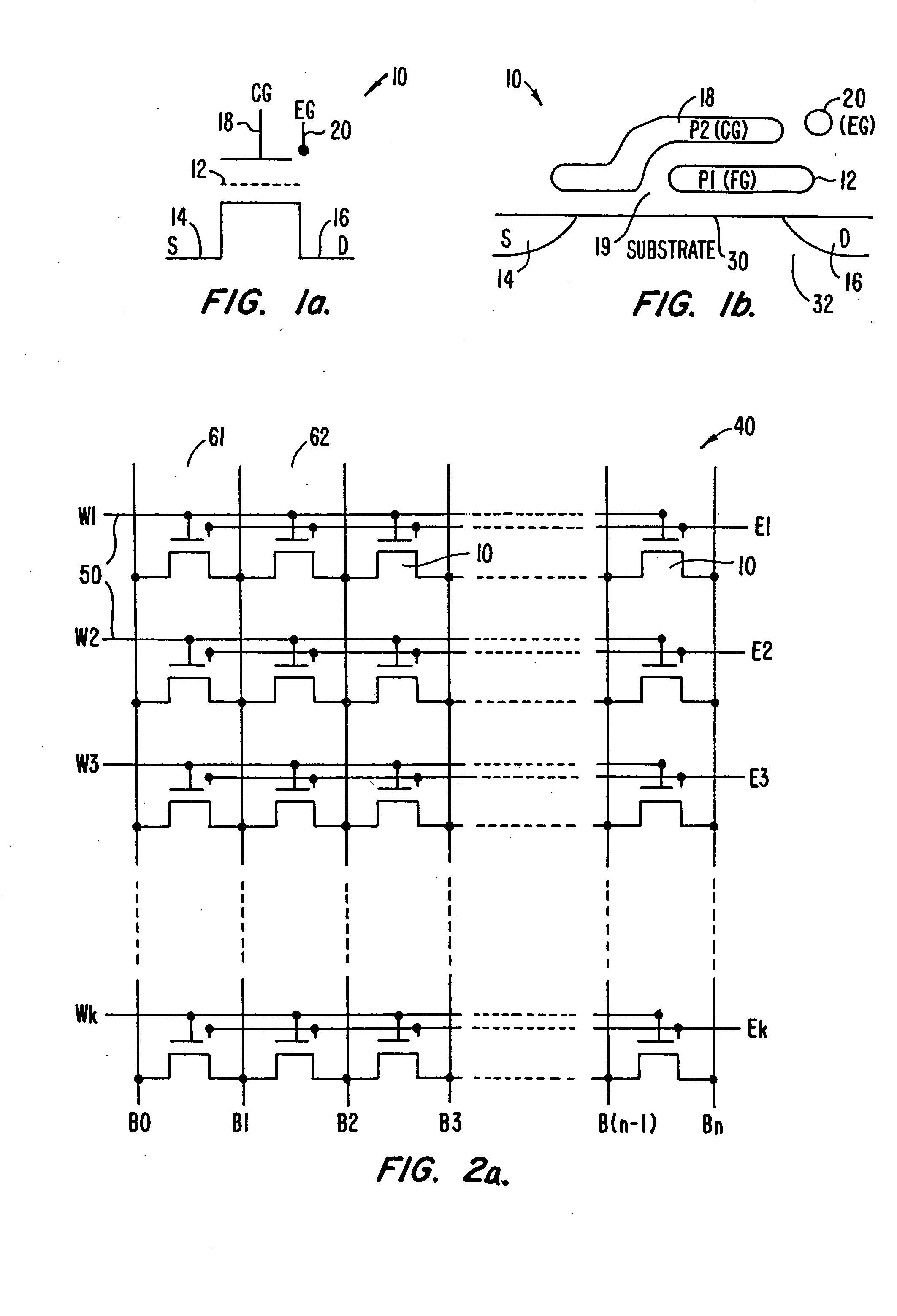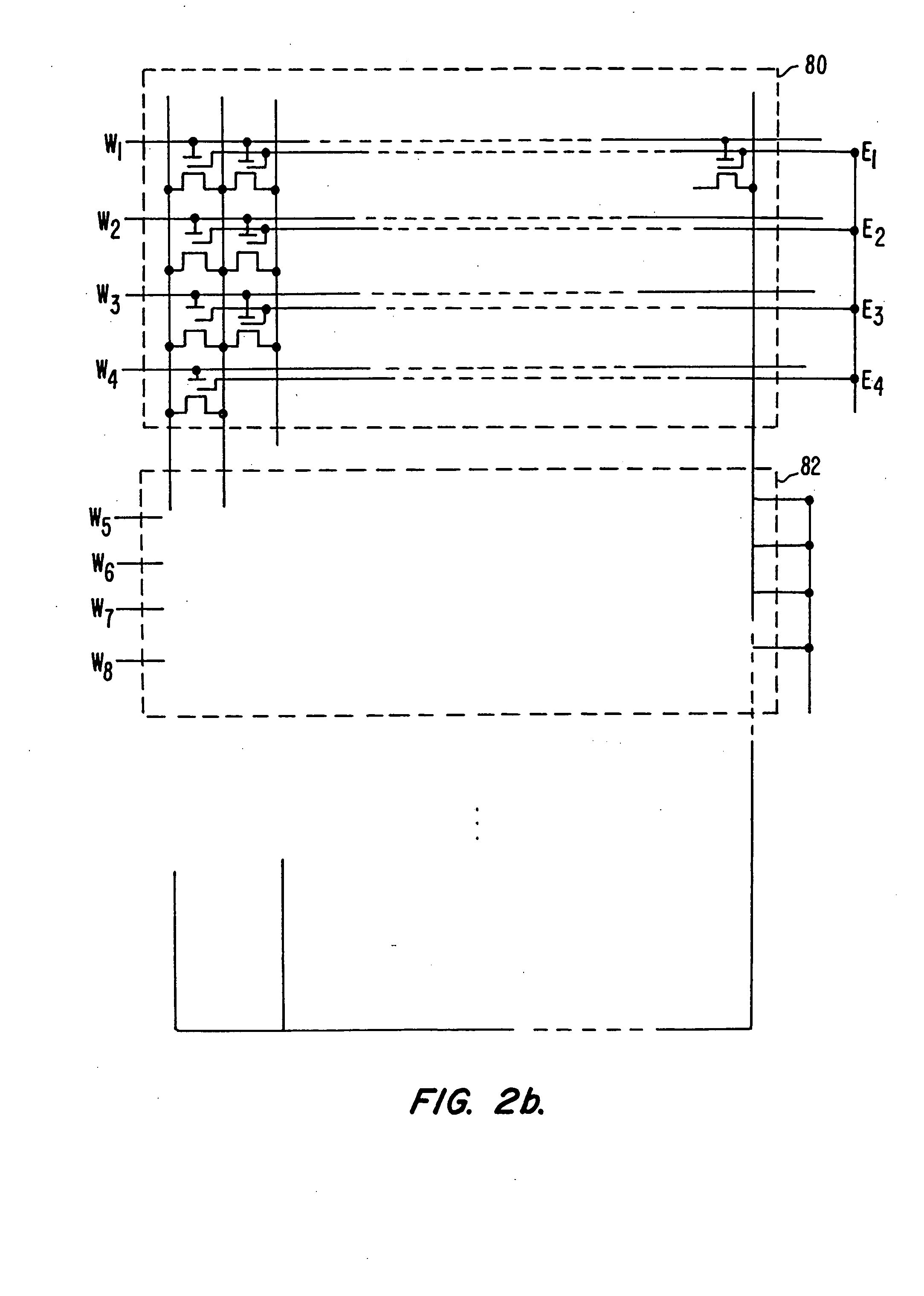Soft errors handling in eeprom devices
a technology of eeprom and soft error, which is applied in the field of semiconductor memory error handling, can solve the problems of hard error, inability to detect soft error in normal operation of the device, and shift of the programmed threshold voltage level, so as to prolong the life-expectancy of the eeprom or flash eeprom device, improve reliability, and improve performance. performance. good
- Summary
- Abstract
- Description
- Claims
- Application Information
AI Technical Summary
Benefits of technology
Problems solved by technology
Method used
Image
Examples
Embodiment Construction
[0044]FIG. 1a illustrates schematically a typical EEPROM cell 10 having a floating gate 12, a source 14, a drain 16, a control gate 18 and an erase gate 20. An exemplary EEPROM structure is generally illustrated in the cross-sectional view of FIG. 1b. The memory cell 10 is formed on a lightly p-doped substrate 30. The source 14 and the drain 16 are formed as two heavily n-doped implanted regions. The floating gate 12, and the control gate 18 are generally made of polysilicon material and insulated from each other and from other conductive elements by regions of dielectric material 19.
[0045] The memory cell 10 is programmed by transferring electrons from the substrate 30 to the floating gate 12. In the example cell of FIG. 1b, the electric charge in the floating gate 12 is increased by electrons forced across the dielectric region 19 from the channel 32 near the drain 16 and into the floating gate 12. Electric charge is removed from the floating gate 12 during an erase operation thr...
PUM
 Login to View More
Login to View More Abstract
Description
Claims
Application Information
 Login to View More
Login to View More - R&D
- Intellectual Property
- Life Sciences
- Materials
- Tech Scout
- Unparalleled Data Quality
- Higher Quality Content
- 60% Fewer Hallucinations
Browse by: Latest US Patents, China's latest patents, Technical Efficacy Thesaurus, Application Domain, Technology Topic, Popular Technical Reports.
© 2025 PatSnap. All rights reserved.Legal|Privacy policy|Modern Slavery Act Transparency Statement|Sitemap|About US| Contact US: help@patsnap.com



